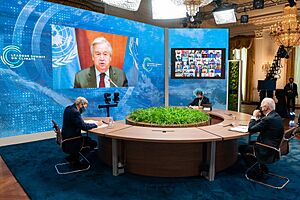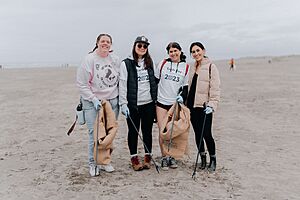Earth Day facts for kids
Quick facts for kids Earth Day |
|
|---|---|
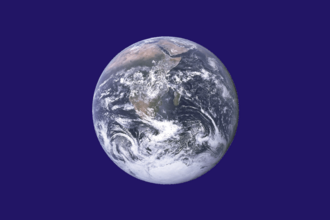
The unofficial Earth Flag created by John McConnell includes The Blue Marble photograph taken by the crew of Apollo 17.
|
|
| Significance | Support for environmental protection |
| Begins | 1970 |
| Date | April 22 |
| Next time | April 22, 2026 |
| Frequency | Annual |
Earth Day is a special day celebrated every year on April 22. It's a time for people around the world to show their support for protecting our planet. The very first Earth Day happened on April 22, 1970. Now, it includes many events organized globally through earthday.org. Over 1 billion people in more than 193 countries take part.
In 1969, at a meeting in San Francisco, a peace activist named John McConnell suggested a day to honor Earth and promote peace. He wanted it to be on March 21, 1970, the first day of spring. Later, a United States senator named Gaylord Nelson had an idea for a nationwide environmental "teach-in" on April 22, 1970. He hired a young activist, Denis Hayes, to help organize it. The name "Earth Day" was thought up by advertising writer Julian Koenig.
Denis Hayes and his team made the event much bigger than just a teach-in. It grew to include the entire United States. Important groups, like the United Auto Workers (UAW), helped a lot with money and support. Denis Hayes said that without the UAW, the first Earth Day might not have worked! Senator Nelson later received a special award, the Presidential Medal of Freedom, for his efforts.
The first Earth Day focused only on the United States. In 1990, Denis Hayes helped make it an international event. He organized activities in 141 countries. On Earth Day 2016, a very important agreement called the Paris Agreement was signed by many countries, including the United States and China. This agreement helps protect our climate. Many communities also held "Earth Day Week" events, focusing on environmental issues. On Earth Day 2020, over 100 million people celebrated its 50th anniversary online.
Contents
- Why Earth Day Started
- The First Earth Day in 1970
- Earth Day Events Through the Years
- Earth Day 1980
- Earth Day 1990
- Earth Day 2000
- Earth Day 2003
- Earth Day 2004
- Earth Day 2005
- Earth Day 2006
- Earth Day 2007
- Earth Day 2008
- Earth Day 2009
- Earth Day 2010 (40th Anniversary)
- Earth Day 2011
- Earth Day 2012
- Earth Day 2013
- Earth Day 2014
- Earth Day 2015
- Earth Day 2016
- Signing of the Paris Agreement at the UN
- Earth Day 2017
- Earth Day 2018
- Earth Day 2019
- Earth Day 2020
- Earth Day 2021
- Earth Day 2022
- Earth Day 2023
- Earth Day 2024
- Earth Day 2025
- Earth Day in Canada
- Earth Day on the March Equinox
- Why April 22 Was Chosen
- Criticisms of Earth Day
- Cool Facts About Earth Day
- See also
Why Earth Day Started
The 1969 Santa Barbara Oil Spill
On January 28, 1969, a terrible oil spill happened off the coast of Santa Barbara, California. Millions of gallons of oil leaked into the ocean. This disaster killed over 10,000 seabirds, dolphins, seals, and sea lions.
Because of this spill, people became very upset. Activists started working to create new environmental rules and education. This event helped inspire the creation of Earth Day. Denis Hayes, who organized the first Earth Day, said that Senator Gaylord Nelson was inspired to create Earth Day after seeing the huge oil slick from an airplane.
Environmental Rights Day in Santa Barbara
On January 28, 1970, exactly one year after the oil spill, "Environmental Rights Day" was held in Santa Barbara. A special paper called the Declaration of Environmental Rights was read. This paper was written by Rod Nash.
The organizers of this day worked with Congressman Pete McCloskey to create the National Environmental Policy Act. This was one of the first new environmental protection laws that came about because of the oil spill. Many important leaders, including Pete McCloskey and Denis Hayes, supported the Declaration. This event was seen as the start of a real environmental movement.
The First Earth Day in 1970
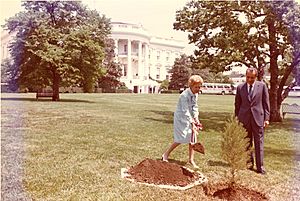
Many people helped start the first Earth Day. Senator Gaylord Nelson from Wisconsin was a strong supporter of protecting nature. He had been looking for ways to make environmental issues more important in politics.
Several things made the time right for an environmental movement. These included Rachel Carson's famous 1962 book, Silent Spring, which talked about pollution. Also, the amazing 1968 Earthrise photograph from space showed Earth as a fragile planet. News about the Santa Barbara oil spill and the Cuyahoga River catching fire also made people pay attention.
Senator Nelson thought that "teach-ins" on college campuses could be a good way to raise awareness. Teach-ins were popular at the time for discussing the war in Vietnam. Nelson believed young people who cared about the war could also care about the environment.
He announced his plans for an "environmental teach-in" in September 1969. A newspaper article about his idea caught the attention of Denis Hayes, a student at Harvard. Hayes met with Senator Nelson and was asked to lead the national campaign. He became the national coordinator and hired many other coordinators.
The Name "Earth Day"
At first, the event was called an "environmental teach-in," but that name wasn't working well. In early 1970, Julian Koenig, a famous advertising writer, offered to help. He suggested several names, including "Earth Day." Koenig liked "Earth Day" because April 22 was his birthday, and "birthday" rhymes with "Earth Day."
Denis Hayes loved the name "Earth Day" and decided to use it. He spent a lot of the campaign's money to put a full-page ad in The Sunday New York Times. This ad was a huge success! "Earth Day" quickly became the common name for the event. The ad also brought in money and thousands of new organizers.
Hayes decided not to trademark the name "Earth Day." He wanted anyone who cared about environmental issues to be able to use the name freely.
Shifting Focus
Many college activists at the time were focused on ending the Vietnam War. They sometimes saw environmental issues as a distraction. Hayes realized that most of the interest in Earth Day was coming from college-educated homemakers and K-12 teachers.
So, he decided to shift the campaign's focus from colleges to community organizing. He promoted large rallies in cities to highlight major environmental problems. He also encouraged environmental education in schools.
Many schools took part in Earth Day activities. They did things like beach clean-ups, tree planting, and recycling. The famous cartoonist Walt Kelly created a poster for Earth Day with his character Pogo saying, "We have met the enemy and he is us" to encourage people to think about their own impact on pollution.
On the first Earth Day, about 20 million Americans participated in rallies and teach-ins. They called for changes to protect the environment. Today, Earth Day is celebrated in 192 countries. Earthday.org says it's the largest non-religious protest day in the world, with over a billion people taking part each year.
Support from Labor Unions
A big part of the funding for the first Earth Day came from labor unions. Walter Reuther, the leader of the United Auto Workers (UAW), was a strong supporter of civil rights and the environment. The UAW gave the first donation of $2,000. They also paid for phone lines so organizers could talk to each other across the country. The UAW printed and mailed all the materials for Earth Day and encouraged its members to join the events. Denis Hayes said the UAW was the biggest helper and that Earth Day might have failed without them.
Earth Day Events Through the Years
Earth Day 1980
The 1970s saw many new environmental laws created in the U.S., like the Clean Air Act and the Clean Water Act. The Environmental Protection Agency (EPA) was also created. Earth Day 1980 was a happy celebration. The main event in Washington, D.C., was a festival near the White House.
Earth Day 1990
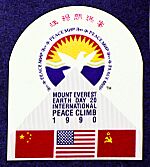
In 1990, Earth Day became a truly global event. It involved 200 million people in 141 countries. This helped bring environmental issues to the world stage and boosted recycling efforts. It also helped prepare for the 1992 United Nations Earth Summit in Brazil.
Two groups organized Earth Day events in 1990. One special event was the Earth Day 20 International Peace Climb on Mount Everest. Climbers from the United States, Soviet Union, and China worked together to reach the summit. They also collected over two tons of trash left on the mountain from past expeditions.
Earth Day 2000
The first Earth Day of the new millennium focused on global warming and clean energy. It used the internet to help activists connect. About 5,000 environmental groups in 184 countries participated.
Earth Day 2003
The theme for Earth Day 2003 was "Water for Life." Earth Day Network created a project called "What's in Your Water?" Events about water were held all over the world, including workshops, concerts, and exhibitions.
Earth Day 2004
In the U.S., Earth Day Network focused on registering voters. They also held major tree planting events.
Earth Day 2005
The theme for Earth Day 2005 was "Healthy Environments for Children."
Earth Day 2006
Earth Day 2006 focused on science and faith. Earth Day expanded into Europe, with events in most European Union countries. Denis Hayes also attended a conference in Ukraine about the Chernobyl disaster. Events also took place in China and Russia for the first time.
Earth Day 2007
Thousands of Earth Day projects happened globally. These included events about energy, protests, cleanups, and water projects. The goal was to build a bigger and more diverse environmental movement. In the U.S., civil rights and religious leaders joined to ask Congress for stronger pollution laws.
Earth Day 2008
Earth Day 2008 encouraged millions of people to "Call For Climate." In the U.S., people were asked to call Congress to push for climate change laws. Large rallies were held in major U.S. cities, with about 350,000 people attending.
Earth Day 2009
The 2009 National Teach-In on Global Warming Solutions reached many college campuses and community groups across the U.S.
Earth Day 2010 (40th Anniversary)
About one billion people worldwide took action for the 40th anniversary of Earth Day. They focused on climate change and other environmental issues. Many leaders discussed plans for a green economy. Students participated in school greening projects, like clean-ups and school gardens. Earth Day Network also partnered with Twentieth Century Fox to plant one million trees.
A large Climate Rally in Washington, D.C., drew over 150,000 activists. They demanded that the U.S. Congress pass strong climate laws. The event featured many speakers, including scientists and celebrities.
Earth Day 2011
In 2011, Earth Day events included a forum for political leaders and the first Earth Day celebration in Tunis City. A project to plant over 1.1 million trees was completed in 17 countries.
Earth Day 2012
The "Billion Acts of Green" campaign reached its goal on Earth Day 2012. This campaign encouraged people to take actions that reduce carbon emissions and support sustainability.
Earth Day 2013
The theme for Earth Day 2013 was "The Face of Climate Change." The goal was to show that climate change affects real people, animals, and places everywhere. People sent in pictures for a collage displayed at events worldwide.
Earth Day 2014
The theme for Earth Day 2014 was "Green Cities." Earth Day Network launched this campaign to help cities become more sustainable. It focused on making buildings, energy, and transportation cleaner and more efficient.
Earth Day 2015
For the 45th anniversary, the theme was "It's Our Turn to Lead." Earth Day 2015 was part of the lead-up to important climate talks in Paris later that year.
Earth Day 2016
The theme for Earth Day 2016 was "Trees for Earth." Countries like India and Morocco made big promises to plant trees. Nearly 700 million people, organizations, and school children took part.
Signing of the Paris Agreement at the UN
On Earth Day 2016, world leaders from 175 nations signed the Paris Agreement at the United Nations. This was a very important step for the climate movement.
Earth Day 2017
For Earth Day 2017, Earth Day Network aimed for global environmental and climate literacy by 2020. This means they wanted everyone to understand climate change and its threats. The theme was environmental and climate education. They promoted "teach-ins" to educate communities and encourage action.
Earth Day 2018
Earth Day 2018's theme was "End Plastic pollution." It focused on teaching people about the effects of plastic use on the environment, climate, and health. An online calculator helped people see how much plastic they used. Many events worldwide included plastic cleanups and festivals. This campaign led to many countries introducing bans on single-use plastics.
Earth Day 2019
Earth Day 2019's theme was "Protect Our Species." Events and programs shared information about why many animal and plant species are disappearing.
Earth Day 2020
Earth Day 2020 was the 50th anniversary. The theme was "climate action." Because of the COVID-19 pandemic, many activities moved online. A group of young activists organized "Earth Day Live," a three-day online event.
Earth Day 2021
The Earth Day 2021 theme was "Restore Our Earth." It included programs like The Canopy Project (tree planting) and Climate Literacy. Earthday.org also held a second "Earth Day Live" online event with activists and leaders.
The Biden administration organized a 2021 Leaders' Climate Summit online. Many world leaders and speakers, including Pope Francis, took part.
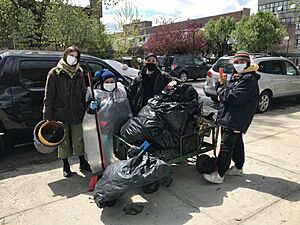
Earth Day 2022
The Earth Day 2022 theme was "Invest in Our Planet." It featured programs like The Great Global Cleanup and Sustainable Fashion. Earthday.org announced that over one billion people participated in Earth Day 2022.
Earth Day 2023
The theme for 2023 was also "Invest In Our Planet." On Earth Day 2023, a collection of images of Earth taken from far away in the Solar System was shared.
Earth Day 2024
The theme for Earthday.org 2024 was "Planet vs. Plastics." Earthday.org called for a 60% global reduction in plastic production by 2040. They also released a report called "Babies vs. Plastics" to highlight the health risks of microplastics.
Earth Day 2025
The Earth Day 2025 theme is "Our Power, Our Planet."
Earth Day in Canada
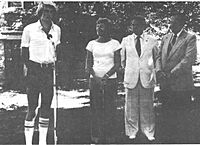
The first Canadian Earth Day was held on September 11, 1980. It was organized by Paul D. Tinari. Flora MacDonald, a Canadian politician, officially opened Earth Day Week. Activities included educational talks, garbage clean-ups by students, and tree plantings.
Earth Day on the March Equinox
Some people celebrate Earth Day on the March equinox (around March 20). This marks the start of spring in the Northern Hemisphere and autumn in the Southern Hemisphere. An equinox is when the Sun is directly over the Earth's equator, making day and night almost equal in length everywhere.
John McConnell first suggested a global "Earth Day" at a 1969 meeting. The first Earth Day announcement for this date was made by San Francisco Mayor Joseph Alioto on March 21, 1970. UN Secretary-General U Thant supported this idea. On February 26, 1971, he signed a statement, wishing for "peaceful and cheerful Earth Days" for our "beautiful Spaceship Earth."
Since 1972, the United Nations has continued to celebrate Earth Day on the March equinox. At the moment of the equinox, it's a tradition to ring the Japanese Peace Bell at the United Nations. Celebrations also happen in many other places around the world.
Why April 22 Was Chosen
Growing Environmental Awareness Before 1970
In 1968, Morton Hilbert organized a conference for students to learn about how environmental damage affects human health. This was an early step toward Earth Day. For two years, Hilbert and students worked to plan the first Earth Day.
Other events also raised awareness. In 1970, Ralph Nader started talking about the importance of ecology. The 1960s saw a rise in environmental activism. People protested against harmful chemicals like DDT and nuclear weapons tests. This inspired Rachel Carson to write her important book, Silent Spring, in 1962.
The Significance of April 22
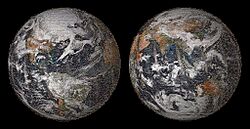
Senator Nelson chose April 22 to get the most students to participate in the "environmental teach-in." He picked a date that avoided exams, spring breaks, and religious holidays. It was also late enough in spring for good weather. This meant more students would be in class, and there would be fewer conflicts with other events.
April 22 also happened to be the 100th anniversary of the birth of Vladimir Lenin, a famous Russian leader. Some people thought this was not a coincidence and that Earth Day might be a "Communist trick." However, Senator Nelson chose the date for practical reasons related to student participation.
Criticisms of Earth Day
Some people criticize Earth Day. They say that the environmental movement sometimes focuses too much on middle-class issues. They also claim it might not pay enough attention to the needs of minority groups and the poor, who often face more environmental problems.
Another criticism is that after so many years, celebrating Earth Day might make people think that our current efforts are enough to stop future environmental disasters.
Cool Facts About Earth Day
- The name "Earth Day" was chosen by an advertising expert named Julian Koenig. He liked it because April 22 was his birthday, and "birthday" rhymes with "Earth Day!"
- The first Earth Day in 1970 was the largest single-day protest in human history.
- On Earth Day 2016, many countries signed the important Paris Agreement. This agreement aims to fight climate change.
- In 2020, over 100 million people celebrated the 50th anniversary of Earth Day online. It was the biggest online event of its kind.
- Senator Nelson received the Presidential Medal of Freedom award. This was for his great work in starting Earth Day.
- There's another similar event called World Environment Day. The United Nations organizes it every year on June 5.
See also
 In Spanish: Día de la Tierra para niños
In Spanish: Día de la Tierra para niños
- Arbor Day
- Earth Hour
- Earth Overshoot Day
- International Mother Earth Day
- World Environment Day
- World Water Day


